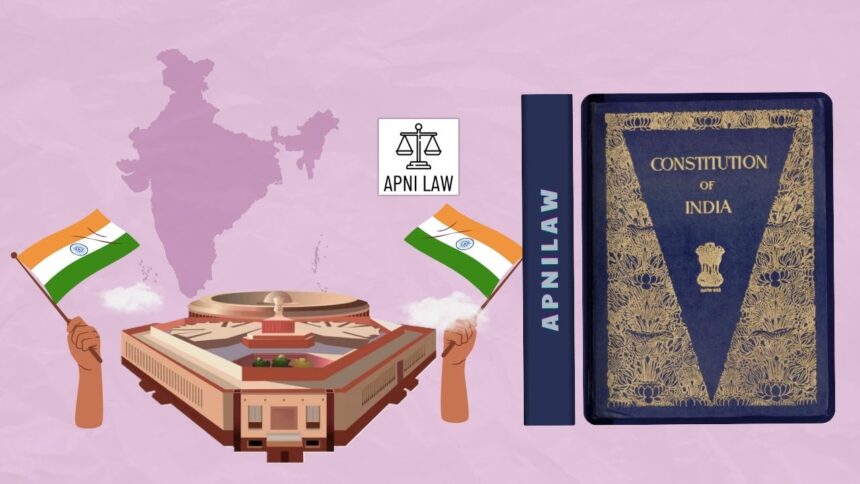Introduction
The National Commission for Backward Classes (NCBC) is a constitutional body established under Article 338B of the Indian Constitution. It safeguards the interests of Socially and Educationally Backward Classes (SEBCs) in India. The NCBC ensures equal opportunities, justice, and representation for backward classes in education, employment, and governance. It was given constitutional status through the 102nd Constitutional Amendment Act, 2018, marking a significant shift from its earlier statutory role.
What Is Article 338B Of The Indian Constitution?
Article 338B lays down the legal foundation for the National Commission for Backward Classes. It provides for the establishment, powers, and functions of the Commission, similar to the National Commissions for Scheduled Castes (Article 338) and Scheduled Tribes (Article 338A). The NCBC’s main purpose is to investigate, monitor, and evaluate matters related to the constitutional and legal safeguards available to SEBCs.
The Article empowers the Commission to inquire into complaints about the deprivation of rights and to make recommendations for the welfare and socio-economic development of backward classes. It also mandates that both the Union and State Governments consult the NCBC on all policy matters concerning SEBCs.
Why Was The NCBC Granted Constitutional Status?
Initially, the NCBC was a statutory body created in 1993 under the National Commission for Backward Classes Act, 1993. However, its powers were limited. The need for greater authority and independence led to its constitutional recognition through the 102nd Amendment Act, 2018.
This amendment inserted Article 338B and Article 342A into the Constitution. Article 338B elevated the NCBC’s status to that of a constitutional commission, while Article 342A gave the President of India the power to specify and modify the Central List of SEBCs, with Parliament having the authority to amend it.
How Is The NCBC Structured?
Under Article 338B, the NCBC consists of a Chairperson, Vice-Chairperson, and three other Members, appointed by the President of India. The President also determines their service conditions and tenure. This structure ensures independence, accountability, and effective functioning similar to other constitutional commissions like those for Scheduled Castes and Scheduled Tribes.
What Are The Main Functions Of The NCBC?
The National Commission for Backward Classes performs several key functions under Article 338B. It investigates and monitors the implementation of constitutional safeguards for SEBCs. It evaluates the working of legal and policy measures designed to uplift these communities.
The Commission inquires into complaints related to the deprivation of rights and safeguards, advises the government on social and economic development policies, and recommends corrective actions. It also participates in planning and reviewing welfare schemes to ensure inclusive growth.
The NCBC submits annual and special reports to the President of India. These reports are tabled in Parliament, promoting transparency and accountability in the government’s approach to backward class welfare.
What Constitutional Provisions Support Article 338B?
Article 338B works in conjunction with several other constitutional provisions that promote social justice and equality. Article 15(4) and 15(5) empower the State to make special provisions for the advancement of backward classes in education and employment. Moreover, Article 16(4) allows reservations in public services for backward classes not adequately represented in the administration.
Additionally, Article 340 authorizes the President to appoint commissions to investigate the conditions of backward classes. The 102nd Amendment also introduced Article 342A, granting the President and Parliament the authority to define the Central List of SEBCs. Together, these provisions create a robust legal framework for social inclusion.
What Are The Judicial Interpretations Of Article 338B?
The judiciary has played a crucial role in interpreting the powers and scope of Article 338B. In the landmark Indra Sawhney v. Union of India (1992) judgment, the Supreme Court upheld the validity of reservations for backward classes and introduced the “creamy layer” principle to ensure that only the truly disadvantaged benefit from affirmative action. It also directed the government to set up a permanent body to address inclusion and exclusion issues in the backward class list — leading to the creation of the NCBC.
Another major case, Jaishri Laxmanrao Patil v. Chief Minister of Maharashtra (2021), clarified that the identification of SEBCs for the Central List is the exclusive power of the President, with Parliament having the authority to modify the list. The Court held that States could maintain their own lists for local purposes unless Parliament decides otherwise. This interpretation defined the distribution of power between the Centre and States concerning backward class identification.
How Did The NCBC Evolve Over Time?
The roots of the NCBC trace back to the recommendations of two key commissions, the Kaka Kalelkar Commission (1953) and the B.P. Mandal Commission (1979). Both bodies studied the socio-economic conditions of backward classes and recommended measures for their advancement.
Following the Indra Sawhney judgment, the National Commission for Backward Classes Act, 1993 established the NCBC as a statutory body. Over the years, its role expanded beyond inclusion in the OBC list to monitoring welfare schemes and policy implementation. The 102nd Amendment transformed it into a constitutional body with wider powers, aligning its status with other equality commissions.
What Is The Role Of NCBC In Policy And Governance?
The NCBC acts as both a watchdog and advisor in the government’s affirmative action framework. It ensures that the rights of backward classes are protected in matters of education, employment, and public representation.
The Commission advises the government on policy formulation, reviews reservation policies, and ensures that welfare programs reach the intended beneficiaries. It also plays a critical role in balancing social justice with merit-based governance, ensuring that affirmative action policies are fair and evidence-based.
Moreover, the NCBC bridges the gap between policy and practice by identifying implementation challenges and recommending solutions to improve the effectiveness of welfare schemes.
How Does The NCBC Strengthen Social Justice?
The NCBC’s constitutional status has significantly strengthened India’s social justice framework. It provides an institutional mechanism for addressing grievances, ensuring representation, and advancing equality for backward classes. Its reports and recommendations help the government identify policy gaps and correct administrative shortcomings.
By ensuring the inclusion of marginalized communities in education, employment, and governance, the NCBC supports the broader constitutional objective of equality and inclusiveness. It also promotes awareness about the rights of backward classes, helping them assert their entitlements effectively.
What Is The Relationship Between NCBC And The Government?
Article 338B mandates that both the Union and State Governments must consult the NCBC on matters affecting SEBCs. This ensures that the Commission has a direct role in shaping national and state-level policies. The NCBC’s recommendations, though advisory, carry significant weight and are often used as a basis for policy formulation.
The Commission also monitors government programs and reviews their outcomes to ensure they align with constitutional principles. It promotes coordination between central and state authorities to maintain consistency in welfare measures for backward classes.
For any specific query call at +91 – 8569843472
Conclusion
The National Commission for Backward Classes (NCBC), established under Article 338B, stands as a cornerstone of India’s social justice system. Its constitutional recognition through the 102nd Amendment Act, 2018 marks a major milestone in strengthening equality and inclusion for backward classes.
By investigating safeguards, advising on policy, and monitoring implementation, the NCBC ensures that the benefits of development reach socially and educationally backward communities. It bridges the gap between law and practice, helping India move closer to the constitutional ideals of justice, equality, and dignity for all citizens.








